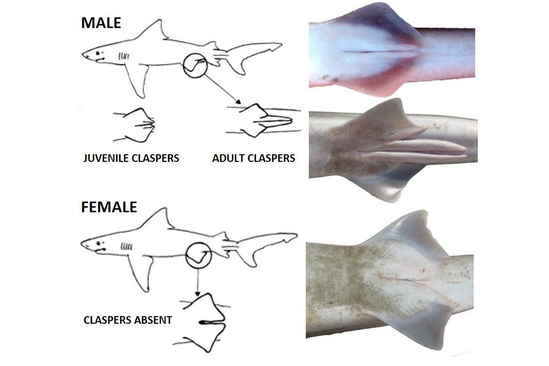Entry tags:
[zoidberg.png]
'vie en rose' problems
• english lyrics: https://literature.stackexchange.com/questions/6232/what-exactly-are-masques-and-bergamasques
• clair de lune - verlaine (1869): https://en.m.wikipedia.org/wiki/Clair_de_lune_(poem)
• clair de lune - faure - (1887): https://en.m.wikipedia.org/wiki/Clair_de_lune_(Faur%C3%A9)
set for voice and piano, inspired by verlaine's poem
• ofc clair de lune - debussy
• clar de lune - verlaine - english translation: https://poemanalysis.com/paul-verlaine/clair-de-lune/
• clar de lune - verlaine - wtf is 'bergamasques' (& teach me some punning) - https://literature.stackexchange.com/questions/6232/what-exactly-are-masques-and-bergamasques
sharks
https://www.sharktrust.org/shark-reproduction
• ovoparous reproduction; some ovo-vivo, some vivo
• "pups"
• sometimes pups are given birth to in nursery areas (shallow and warm)
https://blogs.ifas.ufl.edu/sarasotaco/2022/07/28/shark-bits-shark-reproduction/
DIAGRAMS: sperm-haver claspers, egg-haver no claspers

* videos *
Shark Acadamy: Shark Reproduction (BlueWorldTV)
• vivo: larger sharks like blue shark, bull sharks, and hammerheads
• ovo-vivo parous (aplacental yolk sac viviparous) – eggs not laid, but carried inside body. lived off an egg sac, not umbilical
uh oh, there's a playlist!
https://www.youtube.com/playlist?list=PLJEGLu0_tbrS33VrdO7BGJkDOXa8mE1hQ
shark academy: we ID whether sharks have claspers or not
https://www.youtube.com/watch?v=TWBLi1M8pGg
SENSES
electrosensory system
• electro sensory system (elect. currents)
-- CAN DETECT MUSCLE MOVEMENTS OF FISH NEARBY IN DARKNESS
-- CAN DETECT BEATING OF HEART IF IT'S HIDING OUT OF SIGHT
• ampullae of lorenzini : pores on face power measuring
smell
• nostrils nares, nasal cavities. no breathing just smelling
• one part per one million can sense blood
• up close to hunt, use eyes and elect system to catch prey
breathing
• ram breathing: the always swimming theory. there are like five species like this!
• but most can rest on floor and gulp water thru mouth to breathe actually. "buccal pumping"
sight
• very like humans, anatomically. can see colors
• have the reflective thing in the back like cat, so can see maybe 10 x better than humans in dark
• sharks close eyes (have eyelids) when close to prey to avoid danger while attacking
hearing
• they have ears.mostly internal, with a little pinprick visible on outside
• only low frequencies, which are more like vibrations than sounds. so: lateral line system
• pores all over body with hairs which detect vibration in water
caribbean reef shark
10 ft, 150 lb
very polite feeding frenzies. most tourist dives happen with these guys!
*
https://sharksinfo.com/ovoviviparous-shark-reproduction/
The courtship behavior in sharks is the same as that in other fishes. The reproductive organ in a male shark is its claspers, while the oviduct that leads to the womb performs the role of the reproductive organ of a female shark, and its opening is known as the cloaca.
When the 2 sharks swim parallel to each other, the male shark grasps the female shark and bites it with all its force. Then the male shark inserts his claspers into the oviduct of the female shark and releases his sperms. These sperm will further fertilize the egg that will metamorphose into a zygote.
https://sharksinfo.com/what-does-oviparious-mean-in-sharks/
Similarly, how sharks mate and reproduce may differ from one species to another.
There are claspers on the male species of sharks, which act as sexual organs and are located very close to the pelvic fin. The females of shark species, on the other hand, have oviducts, which are essentially fallopian tubes that lead directly into the womb. The other name of this opening is called the cloaca.
When mating takes place, males inject their clasper into females’ cloaca, releasing sperm and fertilizing their eggs. Mating usually takes place while the sharks are swimming parallel to one another. The male holds the female firmly with his teeth, often leaving bite marks on the female. As most sharks do not mate in captivity, observing mating habits in the wild is difficult.
settings
hurricanes underwater
https://www.livescience.com/60354-how-hurricanes-impact-underwater-marine-life.html
coral reefs
https://www.coral-reef-info.com/caribbean-coral-reefs/
https://en.wikipedia.org/wiki/Coral_reef
• Healthy tropical coral reefs grow horizontally /vertically per year [...] however, they grow only at depths shallower than 150 m (490 ft) because of their *need for sunlight, and cannot grow above sea level.*
• made up of coral skeletons from mostly intact coral colonies. As other chemical elements present in corals become incorporated into the calcium carbonate deposits, aragonite is formed. However, shell fragments and the remains of coralline algae such as the green-segmented genus Halimeda can *add to the reef's ability to withstand damage from storms and other threats*
• coral reefs protect shorelines by absorbing wave energy, and many small islands would not exist without reefs. Coral reefs can reduce wave energy by 97%, helping to prevent loss of life and property damage. Coastlines protected by coral reefs are also more stable in terms of erosion than those without
https://en.wikipedia.org/wiki/The_Bahamas#Geography
(tongue of T something... TOT is deeper part of sea surrounded by andros island)
https://en.wikipedia.org/wiki/Abyssal_zone
https://en.wikipedia.org/wiki/Bathypelagic_zone
